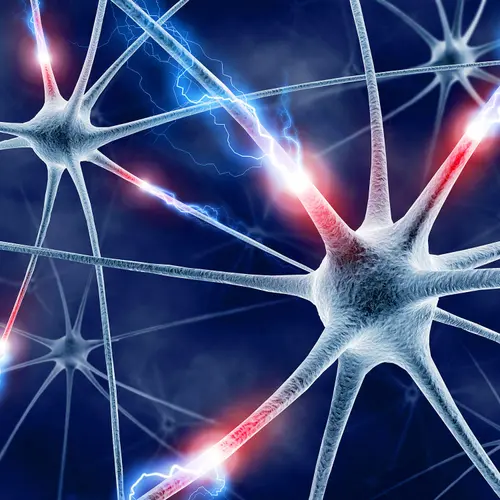It’s not unusual for TV to fast-track medical innovation. Take the current season of Grey’s Anatomy, which featured a major storyline about a “cure” for Parkinson’s disease. The drama series followed a team of researchers and doctors as they used a groundbreaking surgical procedure using skin-derived stem cells.
In real life, despite decades of research and huge gains in technical knowledge around stem cell therapies for Parkinson’s disease, those treatments remain out of reach for most people with the disease. Parkinson's is a brain disorder that worsens over time and causes the death of certain nerve cells that normally produce dopamine, which helps coordinate muscle movement. The most commonly used surgical treatment for Parkinson’s is deep brain stimulation, which delivers electrical pulses to brain areas affecting motor symptoms, such as tremors and rigidity.
Still, given the stakes of this chronic progressive neurological disease facing about 1 million Americans, it’s worth unpacking just how far-fetched the Hollywood depiction is – or isn’t.
A TV-Ready Stem Cell Breakthrough
On the show, doctors take stem cells from a skin biopsy of a character with Parkinson's disease and, “through a complex process,” transform those cells into dopamine-producing cells. People with Parkinson’s typically have low dopamine levels in the putamen, a part of the brain involved in movement. By injecting new dopamine-producing cells into the character's forebrain, where the putamen is found, the doctors aim to boost dopamine levels.
The procedure kicks off with a CT scan, which gives the surgical team images of what’s described as “an interactive 3D roadmap” of the character’s brain. After a few more quick steps – including drilling of burr holes to prevent pressure from building up in the brain – a robotic arm brings a hollow needle into place. A researcher then removes the stem cells from a cooler and examines them under a microscope to confirm that enough cells are alive. Finally, the cells are injected into the character’s forebrain, starting with one side and then moving to the other.
Much of what’s depicted on the show is realistic – if simplified and futuristic – according to Willard Kasoff, MD, an associate professor of neurosurgery at the Lewis Katz School of Medicine at Temple University and director of stereotactic and functional neurosurgery at Temple University Hospital.
“It's not science fiction, but it's a future show,” he says.
The Reality of Stem Cell Treatments for Parkinson’s Disease
There have been several exciting stem cell innovations targeting Parkinson’s in recent years that, on the surface, are reminiscent of Grey’s Anatomy’s televised “cure.”
In 2017 and 2018, for instance, doctors reprogrammed skin cells taken from a person with Parkinson’s to create “replacement dopamine neurons,'' which got implanted into the person’s brain. More recently, a clinical trial involved injecting stem cells into the brains of people with Parkinson's in order to restore their dopamine levels, complete with a GPS-like brain scan showing neurosurgeons where to inject the cells. Upcoming clinical trials will also use Parkinson’s patients’ skin cells to produce replacement dopamine neurons for transplantation.
But such treatments won’t necessarily be widely available anytime soon, according to Kasoff. "Cell transplantation is incredibly difficult and complicated,” he says. “It's been worked on for decades, and it's still early, early research trials. So even that kind of therapy is likely years and years away.”
Some of the therapies rely on genetic engineering to convert stem cells into neural progenitor cells, which can change into various cell types found in the brain – a process known as differentiating. Neurosurgeons can also direct how neural progenitor cells change, such as guiding them to become dopamine neurons. The hope is that once those cells are transplanted into the brain, they’ll “figure out what to do, or be told what to do by the surrounding cells,” says Kasoff.
A Future Cure?
Even if the trials succeed, they may not represent a cure. Because the treatments are directed at the putamen and the substantia nigra (an area where neuron loss can affect dopamine levels), they only address motor symptoms. Parkinson’s disease also affects thinking skills, balance, and other functions throughout the body. Cognitive decline can lead to dementia and death.
“The idea that you can cure Parkinson's by putting cells in the substantia nigra or the putamen is probably not true,” Kasoff says.
Also, Parkinson’s is often thought of as a disease of one cell type: the dopaminergic cells in the substantia nigra. But in reality, Kasoff explains, it’s likely a disease with “thousands of cell types,” which makes any potential stem cell-derived cure extremely complex. Type 1 diabetes, on the other hand, is a disease of only one cell type, and new treatments using insulin-producing cells derived from stem cells could amount to a cure.
As for Parkinson’s, says Kasoff, “it may be that the next stem cell trial hits the jackpot, and then we'll be on to the next step.” That could mean figuring out where to transplant stem cells for the cognitive and balance-related symptoms of the disease, for instance.
Ultimately, he says, “the hope is that what happens on the show is exactly what will happen at some point in the future.”
